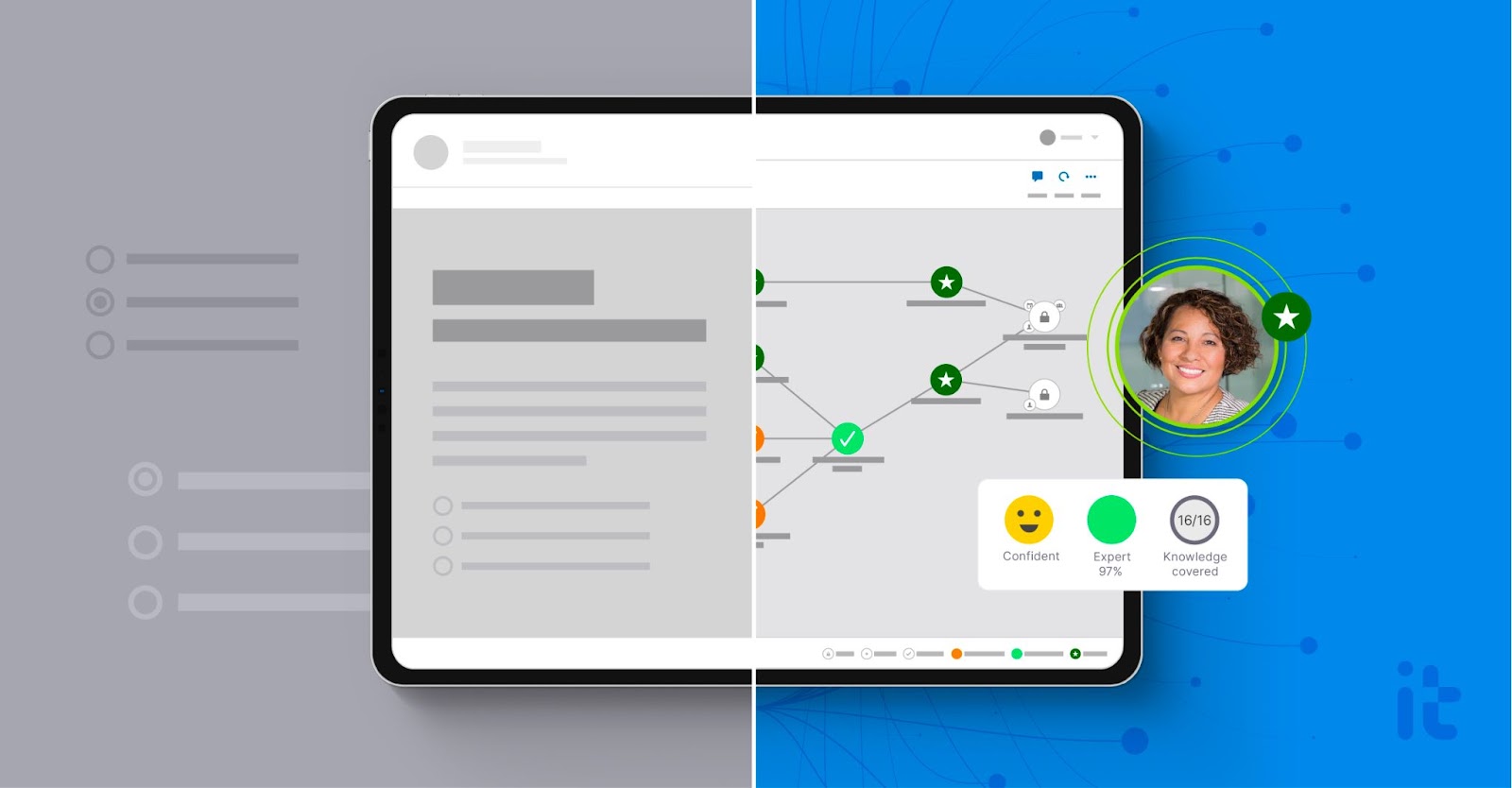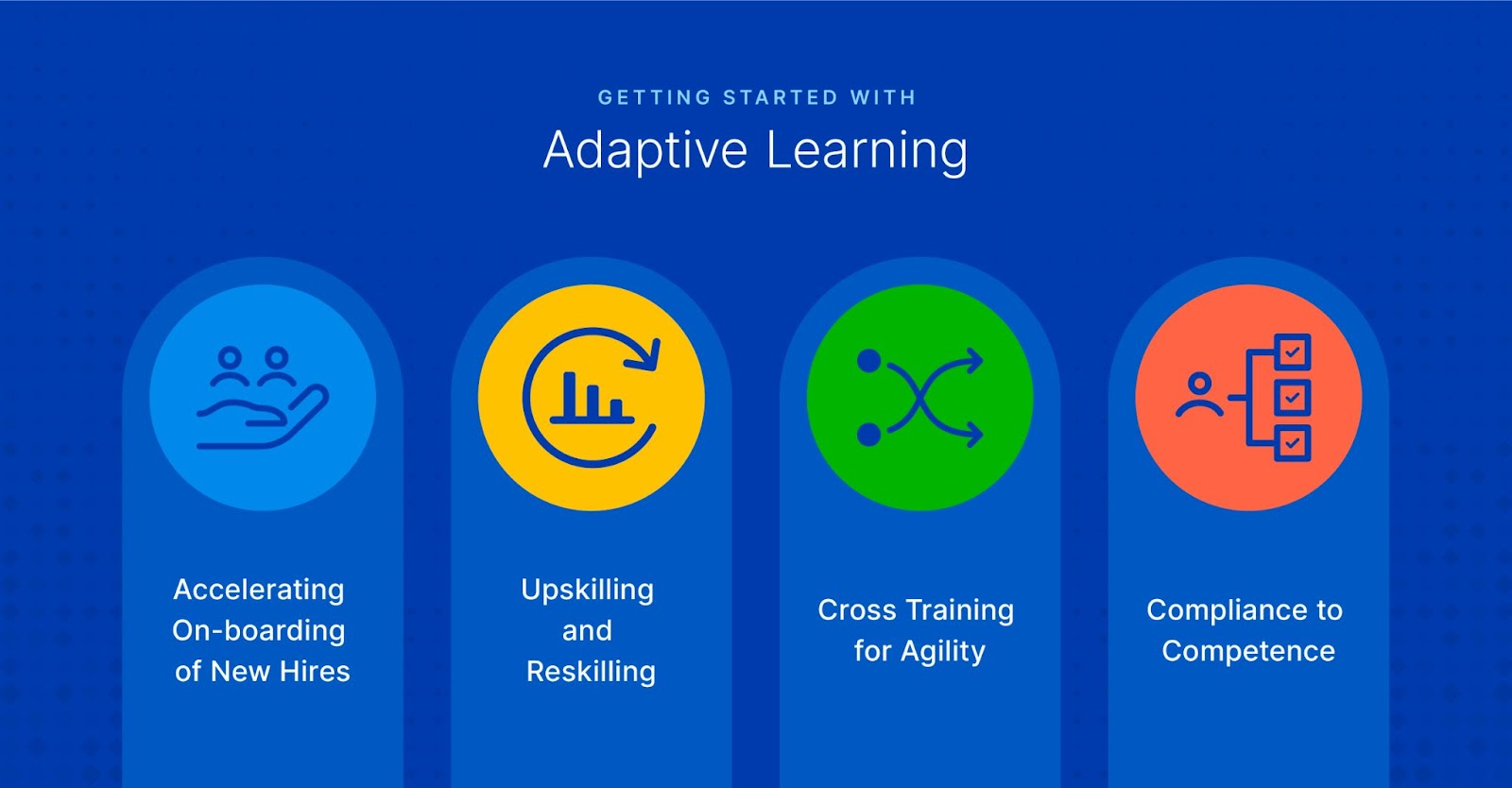Education is for everyone, not just students. Companies need to constantly train their workforce for the increasingly complicated needs of modern business. New hire training, up-skilling and re-skilling, cross-discipline training, and compliance training, are all important training tasks that businesses face.
But companies face several challenges with each of these training tasks. Old, outdated models of learning set them up for time-consuming and expensive teaching practices.
Modern adaptive learning technologies changes this. It provides a personalized, adaptive roadmap for each learner to chart their best educational path. This is the future of education, and the best way for companies to meet their training needs.
Challenges with Learning in Today’s World
Today’s learners face several challenges.
The educational experiences they receive tend to be:
- Not personalized
- Ineffective
- One-size-fits-all
- Time-consuming
- Not tied to performance
- Not data-driven
- Not relevant to their goals
Learning is different in today’s world. Modern technology and modern needs require modern solutions.
In the Age of Personalization, we expect and appreciate personalization in our lives. This includes everything from Spotify playlists to online avatars.
A fast-moving, fast-changing, competitive job environment requires stronger employee skills and agile abilities.
Technological advances, including Artificial Intelligence (AI) and Machine Learning (ML), can solve big problems of scale and efficacy. They create the conditions for personalized everything, including adaptive learning technology.
The Old Learning Model vs The New Model

Without realizing it, most forms of education technology are trapped in a decades-old model:
- Learning as “table stakes” (a minimum entry to a position)
- Focus is on content delivery
- Rigid teaching methods
- Success is measured by usage
- Based on tools like Classroom/Backroom/eLearning
- Poor assessments of student knowledge
- Standalone tools/reports
- Learning independent of job and performance
- Imprecise and periodic assessments
- Learning as an outcome, not a process
By contrast, a new model of learning is developing in the adaptive technology world.
This is the model you need:
- Learning as “strategic”
- Focusing on knowledge and skills development
- Relevant learning objectives
- Success measured by demonstrable success
- Available everywhere – mobile, micro, in-the-flow
- Useful learning and performance assessments
- Real-time insights and answers
- Immediate feedback
- Tightly linked to individual performance
- Precise verification
- Individual development for performance
The old model of learning is characterized by a one-size-fits-all approach. By contrast, the adaptive technology model uses personalized learning as a strategy to reach the goal of sustained performance.
The bridge between the old model and the new is adaptive learning. Adaptive Learning technology creates sustained performance as an outcome.
What exactly is Adaptive Learning?
Adaptive Learning is a personalized approach to learning that makes use of modern technology. It is optimized learning, customized and tailored to the unique needs of every individual, by using human and artificial intelligence to observe, measure, make decisions, and calibrate actions.
Adaptive Learning systems come in a hierarchy of complexity:
Decision Tree Adaptive Learning Software, the least complicated, relies on the simple classification of content. They use simple “if this, then that” sequences.
Rules-Based Adaptive Learning Software rely on static rules-based algorithms. These rules predetermine the learning path.
Advanced-Algorithm Adaptive Learning Software prescribes content based on prior content mastery. Learning paths are evaluated in real-time compared to other learners.
Machine-learning Based Adaptive Learning Software are the most advanced. They use programmed algorithms to make real-time predictions about a learner’s mastery.
A Metaphor for Learning
Outdated learning models rely on the metaphor of Netflix: linear streams of content, with little to no movement. Learning requires active movement from one idea to another, not passive consumption. The correct metaphor for learning is a GPS, not Netflix. Learners need a map, and a way to orient themselves in their space of learning. Their map is the foundation of their learning journey. Just as no two individuals are exactly alike, no two learning maps are exactly alike.
There are several ways to personalize a learning journey using a “GPS for learning”.
- Navigate one neighborhood at a time.
- Navigate at your own pace.
- Know where you are and where you are going.
- Follow the correct pathway to get there.
- Pay attention to where you should speed up and slow down.
- Make note of recommended places to revisit, based on your goals.
In any case, the user’s experience adapts based on their precise location. The learning journey and the learning resources must change to reflect the needs of the learner. Factors which influence this include the learner’s proficiency, the learner's prior knowledge, the learner’s level of engagement, the learning context, and the specifics of the learner’s profile, including job role, location, and preferences
Getting Started with Adaptive Learning
 Adaptive Learning has several proven use cases, including:
Adaptive Learning has several proven use cases, including:
Accelerating On-boarding of New Hires: Training new hires is expensive and time-consuming. Adaptive Learning trains them faster and better.
Upskilling and Reskilling: Even veteran employees need regular updates to their skills to advance their careers and stay on top of current trends.
Cross Training for Agility: Employees can grow related skills quickly to make them more agile.
Compliance to Competence: Adaptive Learning can speed up and contextualize mandatory training.
In any of these use cases, it is important to measure the success of your results. The four most important factors to consider are Effectiveness, Efficiency, Relevance, and Agility.
Use Case: Improved Speed to Competency for Healthcare New Hires
Our system has helped many companies across multiple industries. In one case, we helped a healthcare provider speed up their high volume of new hires every year, which typically took up hundreds of hours of training.
New hires needed multiple modes of training over the first three months of their job. There was a high variation in pre-existing training among new hires. And there was a need for consistency across thousands of locations.
Our adaptive learning model reduced time to onboard, improved knowledge assurance, and reduced load on trainers.
Objections to Adaptive Learning
Not everyone buys into the idea of Adaptive Learning. Since it lies at the forefront of educational technology, there is some resistance to adoption.
There are three main objections to Adaptive Learning, all of which can be overcome:
My current ecosystem does not support Adaptive Learning
To transition, don’t replace your existing technology. Just add new technology. Make your current systems smarter.
There is a lack of adaptive expertise.
The right technology partner, like Realizeit, will show you the way. Also, the shift is more a shift in mindset than in expertise.
Adaptive Learning is too time-consuming or expensive.
Start small and build from there. Pick one area to build skills in first. Pick your use case based on needs and values. And estimate your return on investment across various possible applications.
Adaptive Learning with Realizeit
Realizeit offers the latest technology in Adaptive Learning software. We take pride in helping companies train their workforce faster and more efficiently.
If you would like to start a conversation, learn more about us, or hear about how other organizations use Realizeit's adaptive learning program, feel free to reach out to our Realizeit team.
We hope to help you make personalized learning a key component of your organization’s training strategy!